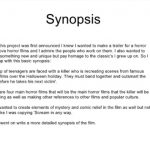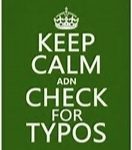A pain in the neck, bent over your computer or tablet, typing or writing, it is the dreaded  synopsis. DREADED, that is the adjective most often accompanying the word synopsis. And I do get it. It is hard to write, to think through your whole book. You must decide what is a main plot and what are the sub-plots. You must decide who are the main characters, when and how are they included. And whether it is 50K or 90K, it is a lot of thinking to do. But do it you must.
synopsis. DREADED, that is the adjective most often accompanying the word synopsis. And I do get it. It is hard to write, to think through your whole book. You must decide what is a main plot and what are the sub-plots. You must decide who are the main characters, when and how are they included. And whether it is 50K or 90K, it is a lot of thinking to do. But do it you must.
SCBWI Carolinas recently sponsored an online program, Wait! What? A Synopsis? not too long ago. The gist of the presentation was that the synopsis should represent not only the plot but the motivations of the main characters. And  Yikes! all of this in under 600 words! One page! And, at the same time you want to do two, maybe three things:
Yikes! all of this in under 600 words! One page! And, at the same time you want to do two, maybe three things:
- show the uniqueness of the story
- show the believability of the characters
- show the ending
And that is not, as Stacy Whitman put on my synopsis, ‘spoilery’ [which may or may not include a dash].
There were multiple corrections on my synopsis for typos and I blame that on my learning to  read by sight and not by phonetics and on a mild case of dyslexia which translates into poor mechanics. Sigh. Excuses done!
read by sight and not by phonetics and on a mild case of dyslexia which translates into poor mechanics. Sigh. Excuses done!
The most important addition to your writing and publishing according to Ms. Whitman is the synopsis shows that you have thought out your plot and can distinguish it-from beginning to end- along with the main characters in your story. Somehow that seems basic, but no. To me it’s like the pitch. How would I pitch this story?
In BECOMING THE ONLY, twelve-year-old EMILY POUVERAIN DELAQUA, living in the shadow of her successful grandma after whom she is named, struggles with death, intimidation, and deception. A contemporary middle grade novel of 54K words, BECOMING THE ONLY is a genre mash-up of Moon Over Manifest meets a middle grade The Brief History of Montmaray.
The question I have to answer, I have come to realize, is does the synopsis augment or betray the pitch. Augment is far better, right? Therefore the synopsis should include good details, the
the
most telling details including the motivation of the main antagonist, whoa!
I like this image because I have come to realize it is true, motivations are the muscle of the story, the heft that brings the story from being a plot with a beginning, middle and end–a hundred pound weakling–to a robust and fulfilling story and it is for story we strive, amend, revise, and edit.
As pain in the neck as it is, a synopsis speaks to the truth of my story and for that I will work it and work it and work it so that I can do the exact same thing for the story itself.
